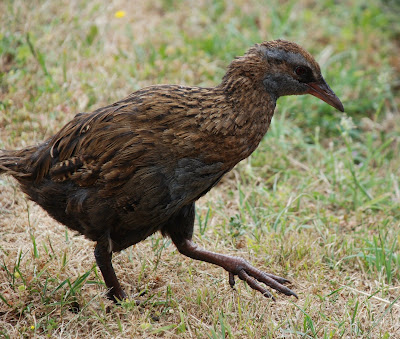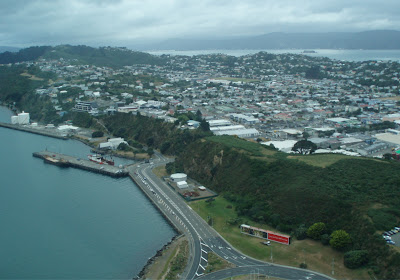 The Future Eaters
The Future Eaters by Tim Flannery has been around since 1994, but I just read it this week. One of our excellent tour guides in New Zealand last month recommended it. "Future eaters," in the definition of the book, are people who kill the large animals, cut down the trees, and destroy their environment. The Polynesians went from island to island doing that -- but they always found another island. Implicitly, our current situation is that we have run out of "islands."
My experience in New Zealand inspired fascination for its bird life and the landscape. I also was intrigued by the short history of the Maori, who -- I learned -- arrived in impressive sea-going boats only within the last thousand years. Before that visit to NZ, I had very little idea of the geography or the natural history there. I had heard that the Maori people were very warlike, and had farmed much of the two islands. Similarly on my two visits to Australia (in the 1990s) and subsequent reading projects, I had formed a brief impression of the much longer duration of the Aboriginal habitation of the Australian continent and how they adapted to its unusual climate and ecology before the total disruption of European colonialism. My knowledge was multiplied by this book.
The Future Eaters starts with the age of dinosaurs on the amalgamated southern landmass that included Antarctica, South America, Australia, New Zealand, and many of the surrounding islands. Flannery describes the rising and falling seas, the migrating and separating continents, and the evolving marsupials, placental mammals, reptiles, birds. Finally we come to the eventual arrival of the little hairy ape -- a tool-using predator that changed virtually every aspect of the Australian continent. Every chapter of the book seemed to answer some question that I had had in mind.
I was fascinated by the Polynesian experience -- discovering an island, establishing settlements, then frequently exhausting the resources, extinguishing the most useful species, and destroying plant life and other life. The most extreme case discussed is Easter Island, where every tree was cut down, and the human population -- unable to make canoes in which to escape -- starved and dwindled almost to extinction themselves. (Jared Diamond makes use of this same example in the much more recent book
Collapse.)
The Maoris, another example of "future eating," arrived in NZ with a few possessions and little hunting technology. They found a number of species of delicious, huge, nearly tame birds: the moas. Within a few hundred years they had eaten every one, as well as extinguishing a few other species, destroying some of the forests, and creating an erosion disaster. They then were forced to adapt to a changed and denuded land. Just a few hundred years later, when the Europeans arrived, the Maori had developed extremely warlike behavior, including cannibalism, in response to hard times. The book tells this story in great and fascinating detail, all to my surprise.
In a few places humans established an equilibrium with the environment. Pre-European Australians, Flannery established, managed the meager resources of the continent for 60,000 years. Although on first arrival they seem to have driven the largest animals to extinction, after a while they established a steady state for the land. They selectively burned the forests, enabling regrowth in a remarkably sustainable way. They established religious practices that protected species -- such as maintaining some land areas as no-go, effectively using them as breeding grounds for species that would otherwise have been used up. The balance of humans and their surroundings turns out to have been amazing. A brief mention of ancient Aboriginal art works -- mainly unexplored at the time the book was written -- makes me really hope to learn more, as I had no idea that such artifacts existed.
The saddest part of the book documents the arrival of the Europeans and their terrible misues of both humans and the environment. Flannery is passionate in his condemnation of the worst of this, especially the inhumanity of the treatment of the natives, including vicious massacres. Although he condemns the excesses, he also points out how impossible it was for the settlers, transported convicts, and other early arrivals to understand the big picture.
Flannery's final point is a long series of advisory suggestions to the Australians about how to manage their resources now. This for me is the least interesting part of the book: fortunately it is only the last 50 or so pages of the 400. I enjoyed reading this book very much.
Other books treat the general subjects related to the issues in
The Future Eaters. Some of these books are among my favorite reading including:
- Jared Diamond's Guns Germs and Steel and Collapse treat much the same subject matter but from a global, rather than an Australia-New Zealand perspective.
- Charles C. Mann's 1491: New Revelations of the Americas Before Columbus discusses the impact of Europeans on the Americas.
- Not that I've read them recently, but some of the books of Stephen Jay Gould contain related discussions of the process of evolution.
 New information on the Mona Lisa, my favorite painting and my favorite subject of parody:
New information on the Mona Lisa, my favorite painting and my favorite subject of parody:










































